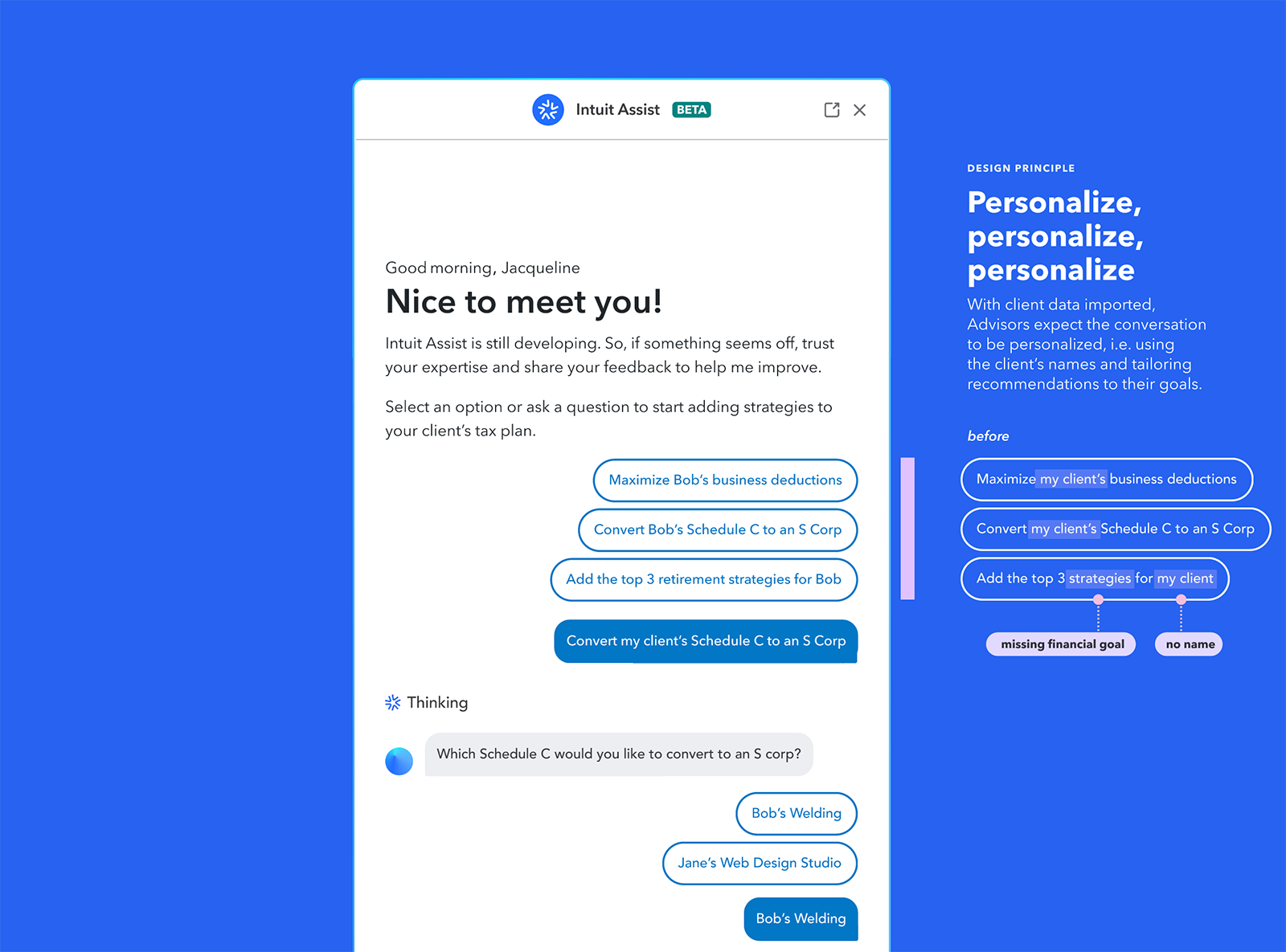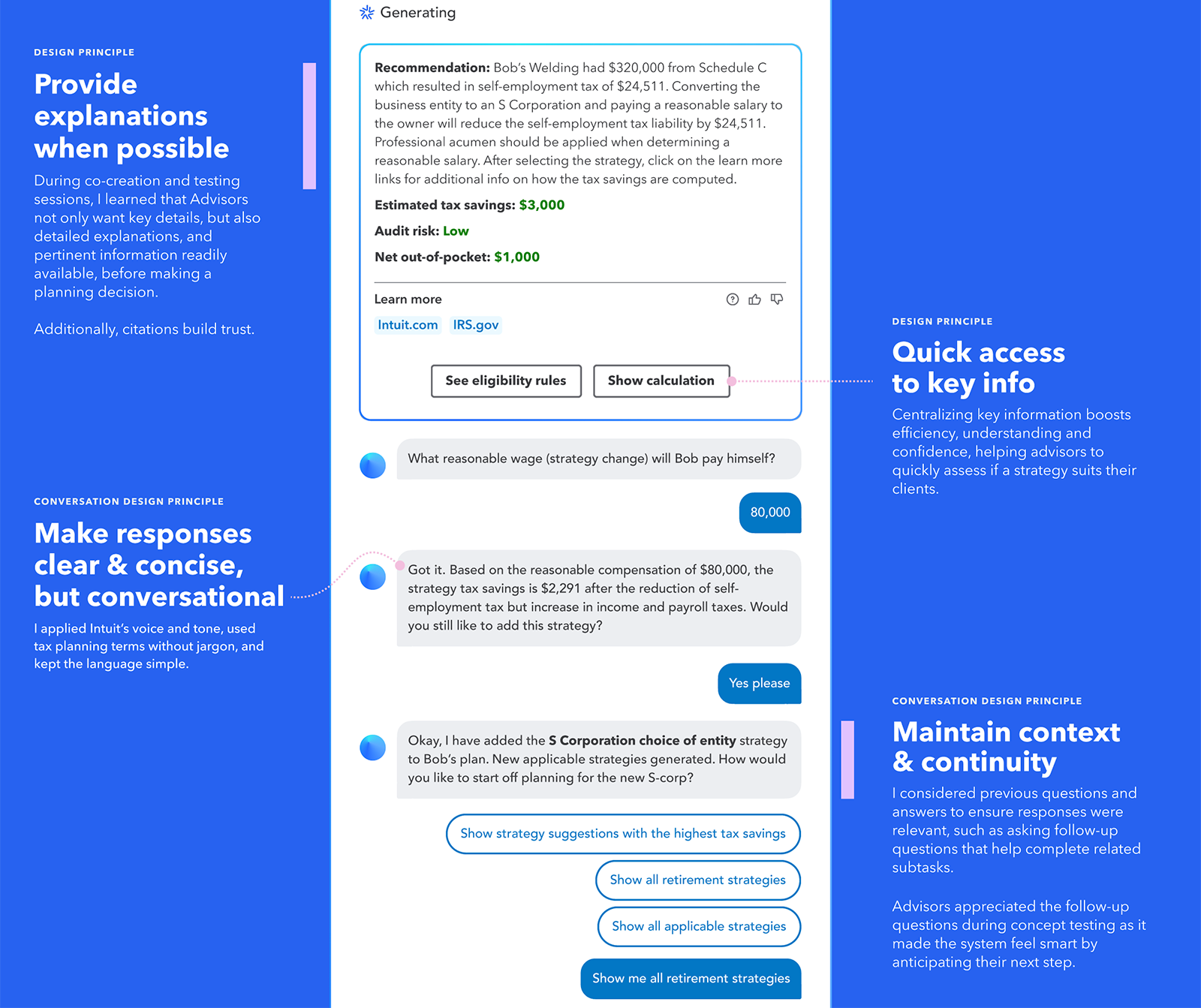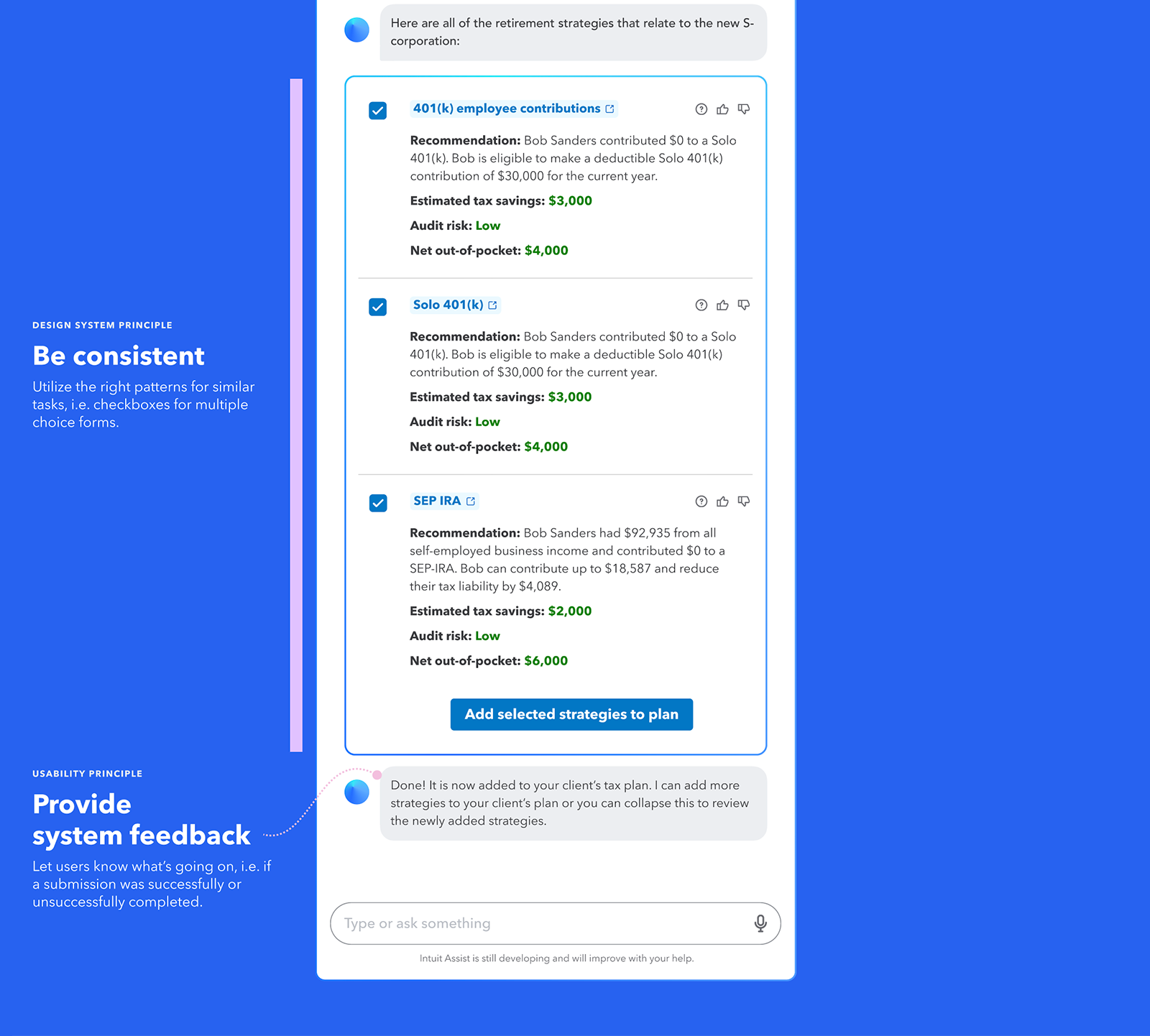Tax planning with a GenAI assistant

35% of advisors spend up to 40% of their time contemplating strategies to add to their clients' tax plans, only to abandon them - the business losing out on potential earnings of over $1 million as a result.
Provocation
How might we leverage Intuit Assist (Intuit's GenAI-powered chatbot), an innovative and personable approach, to streamline the process of adding strategies to a client's plan, while also fostering enjoyable conversations?
Role:
- Conduct research to uncover unmet needs and pains of aspiring advisors
- Co-create, test and iterate concept prototypes to find a solution that delivers value to Advisors and brings a durable competitive advantage to the business
- Present to Senior Leadership
- Work with triad and cross-functional teams to define CX, Product Strategy, MVP and Road map
- Work with marketing to help design marketing artifacts
Outcome
After dozens of interviews, co-creation, and usability testing sessions, iterations upon iterations of the copy - I landed upon a proof of concept that advisors thumbs'd up and got stakeholders' and senior leadership's approval and buy-in.
- increased engagement, encouraging tax advisors to create more tax plans and purchasing more credits, increasing conversion from 15% to 23%
- received positive qualitative feedback from advisors, stating that they found the feature "very valuable"
- concept testing confirmed the willingness of tax advisors to pay extra for a GenAI, potentially creating additional revenue for the business unit.
- secured funding for more GenAI projects and established design principles for future design and development at Intuit.

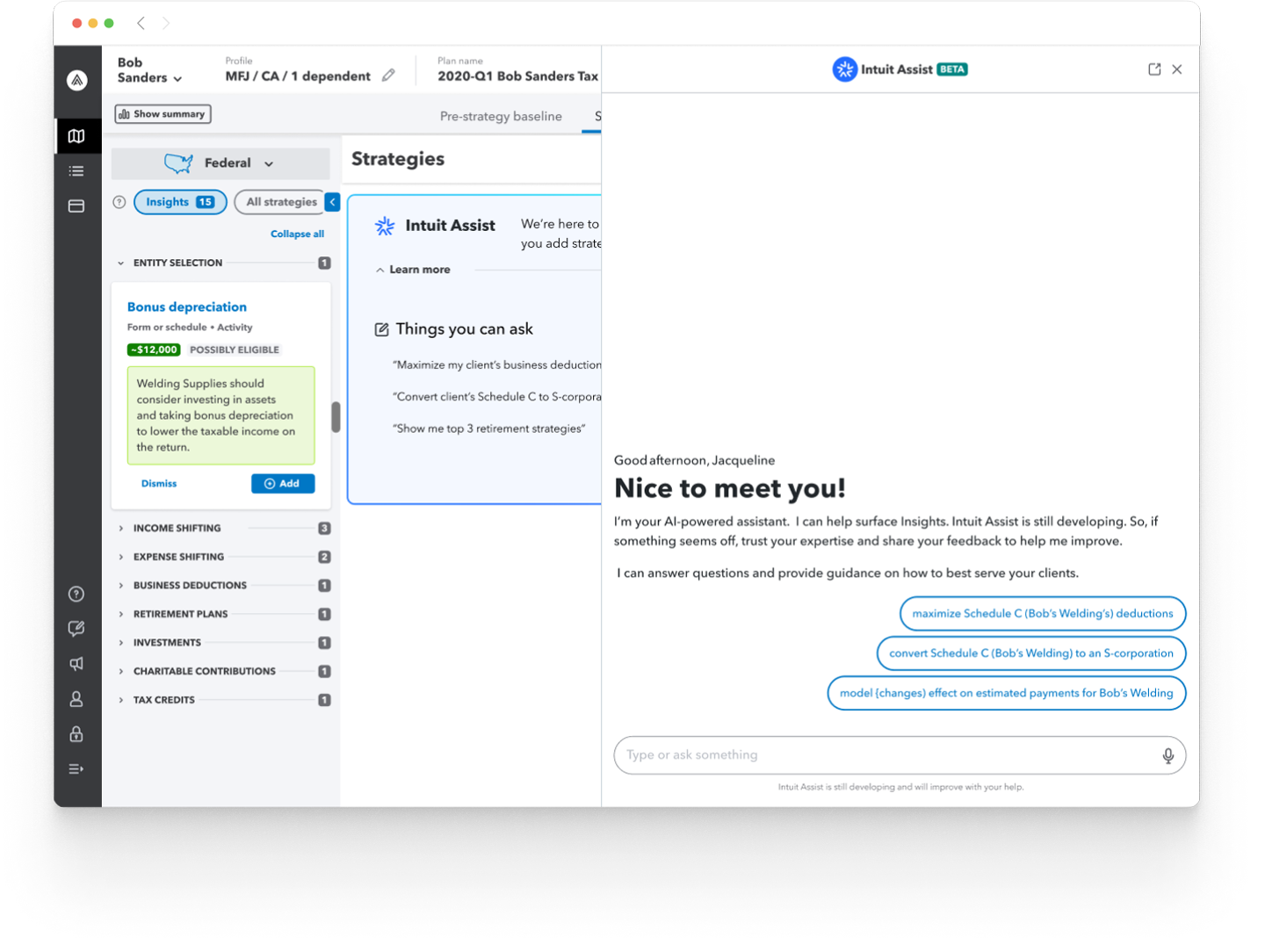
low plan creation = low conversion rates (tax plan credit purchases)
35% of advisors spend up to 40% of their time contemplating strategies to add to their clients' tax plans, only to abandon them - the business losing out on potential earnings of over $1 million as a result.
Phase 1
Uncovering opportunities
A dive deep into tax advisors' journey
To save time and money, I adopted a hybrid approach for user interviews, blending traditional interview questions with a co-creation session. To minimize confirmation bias, I allowed users to speak freely, unprompted.
Observations
This screen is where advisors can begin adding strategies to a tax plan...
...but also where many
struggle to get started



“How can I tailor this long list of strategies to my client’s goals?”
II. Tested for desirability
Conducted a test with advisors to get a sense of whether this is something they'd use or want.


“How did it determine tax savings of $10,000?”
II. Tested for desirability
Conducted a test with advisors to get a sense of whether this is something they'd use or want.

Phase 2
framing the problem
II. Tested for desirability
Conducted a test with advisors to get a sense of whether this is something they'd use or want.
Key insight and frustration area
I found that effective tax planning requires advisors to often shift between analyzing and adding or developing strategies before communicating the plan to their client.
Cross-functional alignment
I facilitated a workshop with our cross-functional partners to identify the problem area we should focus on. By incorporating the insights from our interview synthesis and the information they provided, we voted to prioritize this issue based on its value to both customers and the business.
Problem Statement
As a tax advisor,
I need to add tax strategies for my client,
But I'm finding it time-consuming within Intuit Tax Advisor (ITA) due to information being scattered across various locations,
Which makes me feel inefficient, ineffective and not confident with creating a tax plan with ITA.
provocation
.gif)

How might we leverage Intuit Assist (Intuit's GenAI-powered chatbot), an innovative and personable approach, to streamline the process of adding strategies to a client's plan, while also fostering enjoyable conversations?
Phase 3
Utilized data to inform hypothesis
II. Tested for desirability
Conducted a test with advisors to get a sense of whether this is something they'd use or want.
My PM and I reviewed analytics to identify a correlation between adding strategies and conversion rates.
We found that advisors using 4+ tax strategies per plan are more likely to buy more credits to create additional plans.
If we implement Intuit Assist,
It will enable advisors to quickly add at least 4 strategies and move on to purchase more credits.
Success will be measured by 30% of first-time users adding strategies and purchasing additional credits.
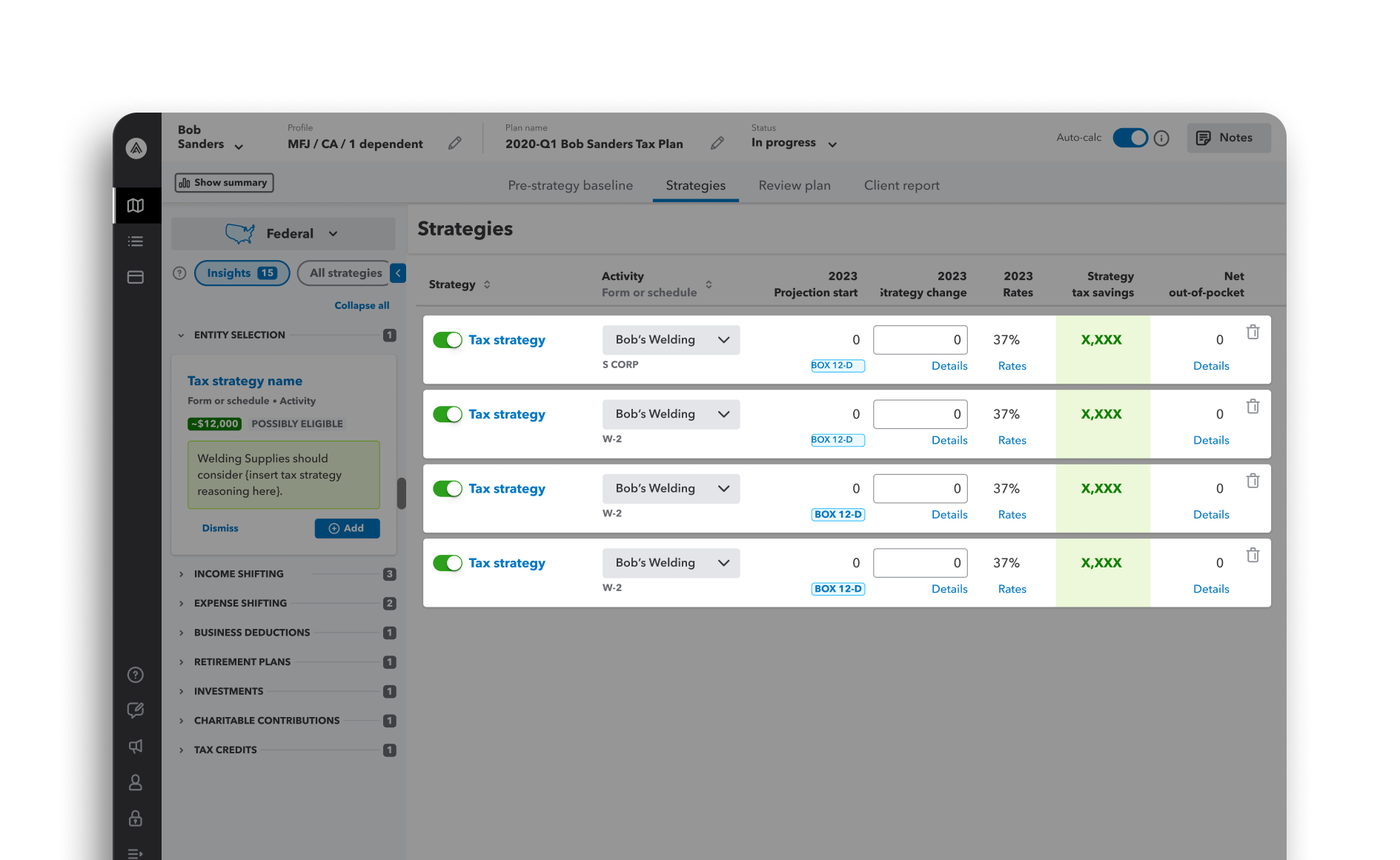
Strategies screen with 4 strategies added.
Phase 4
Design, Prototype & Hand-off
After conducting research, I adopted a content-first approach before delving into visual or UI design. My goal was to understand the conversation flow and identify the learning materials advisors needed to make informed planning decisions.
I reviewed surveys, prior interviews, experiments, and spoke with subject matter experts to determine the most complex tax strategy and then worked backwards from there.
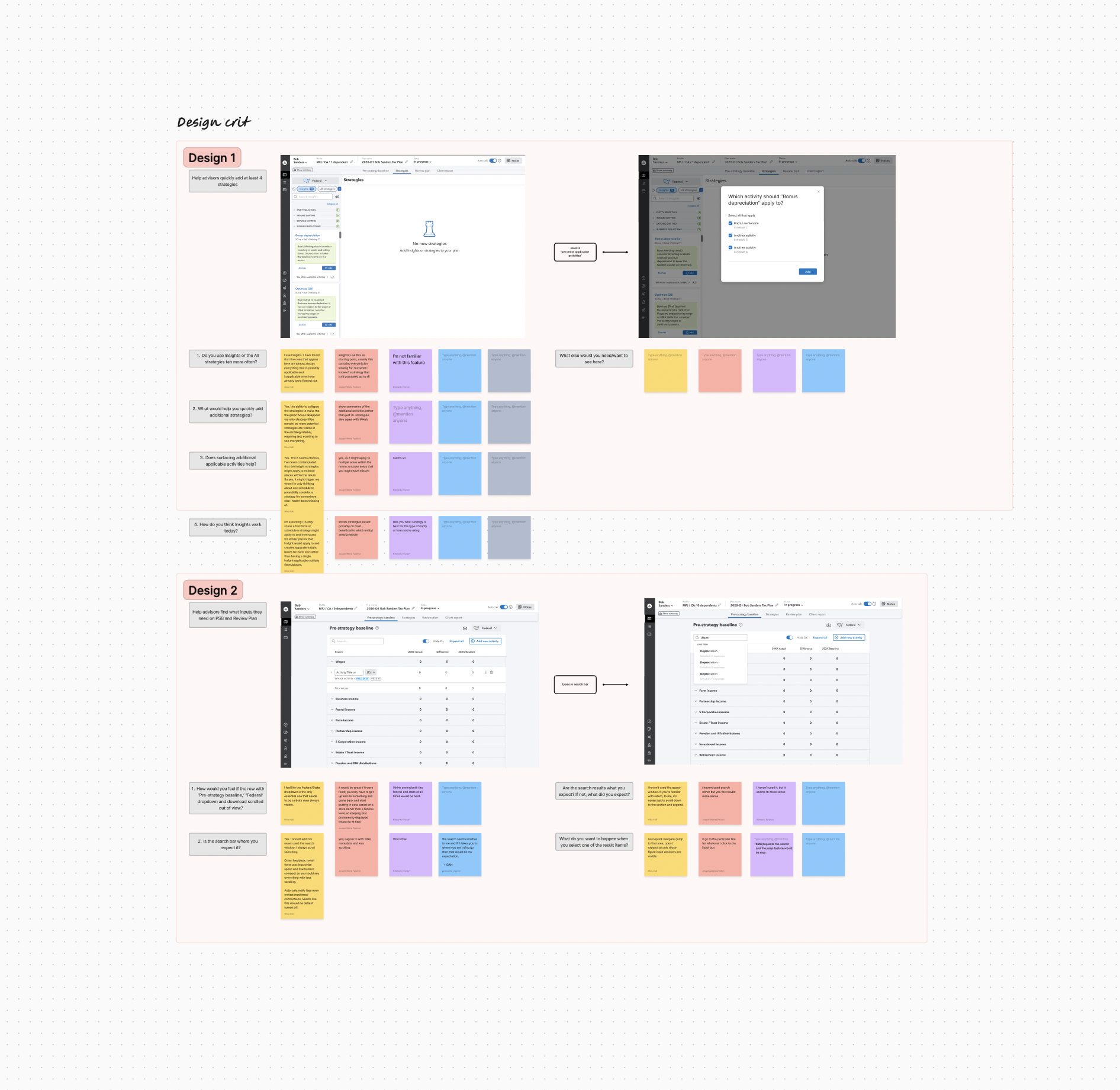
Getting first-time users quickly started
GenAI was a new concept to most of the advisors I spoke with. While some were excited and willing to pay additional for the new feature, others were more reluctant due to privacy concerns. Many asked if we could address these questions and therefore, I placed the Q&A in this first-time-use screen.

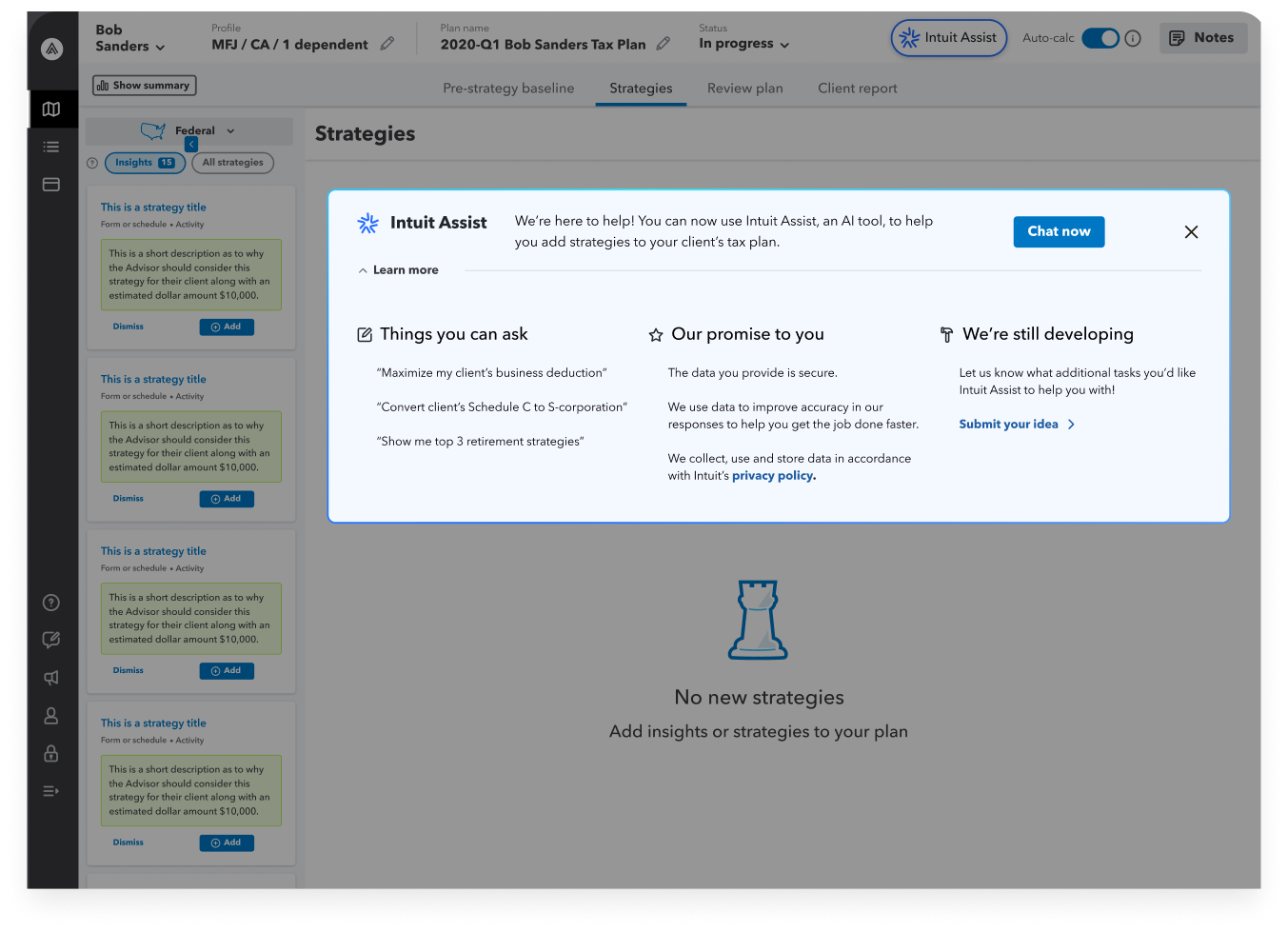
GenAI prototype I created in Figma and presented to stakeholders and senior leadership.
We asked:
if you had a genie in a bottle, what would you ask it?

I collaborated closely with the new GenUX team and a conversation designer to grasp existing chatbot use cases, concerns, limitations and metrics for success. This enabled me to propose a lean, yet valuable, v1 before tax season.
Expectation vs Reality
Working closely with developers, I broke down the ideal state into feasible chunks of future work.

Left to right: Ideal state vs v1.
Creating documentation for net-new GenAI patterns
I worked with the GenUX team to craft our business unit's pattern library. This involved documenting use cases, principles, and guidelines, aiming to facilitate designers' seamless adoption of the patterns in the near future.
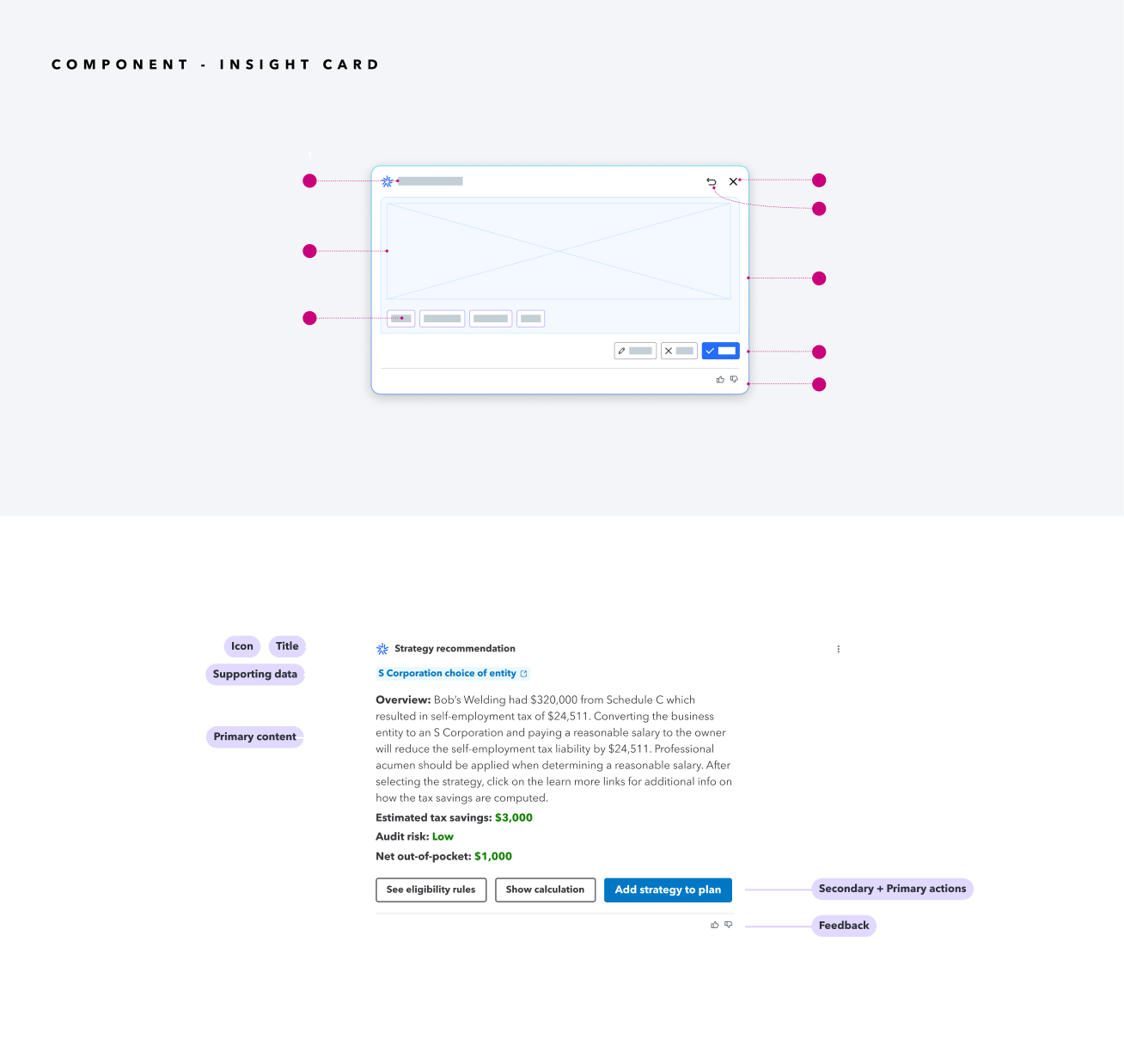
Documentation of the strategy insight use case for Intuit Assist for the Tax Advisory space.
OUTCOME
Intuit Assist for Intuit Tax Advisor was launched in May 2024, after tax season to first-time users.
hypothesis proven true
Within first month of launch, 50% of first-time users used Intuit Assist to add strategies to their client's tax plans and continued to purchase more credits, increasing conversion from 15% to 23%.
Other success metrics
Customer satisfaction
- positive qualitative feedback from in-product feature survey
- +15 points in net promoter score
Usability
- reduction of time-on-task by half (40 minutes to 20 minutes)
- increase in task completion success rate by 60%
monitoring to improve
Through conversation flow data, we were able to see the questions asked, choices selected, terminology used, where users are getting stuck, and why.
